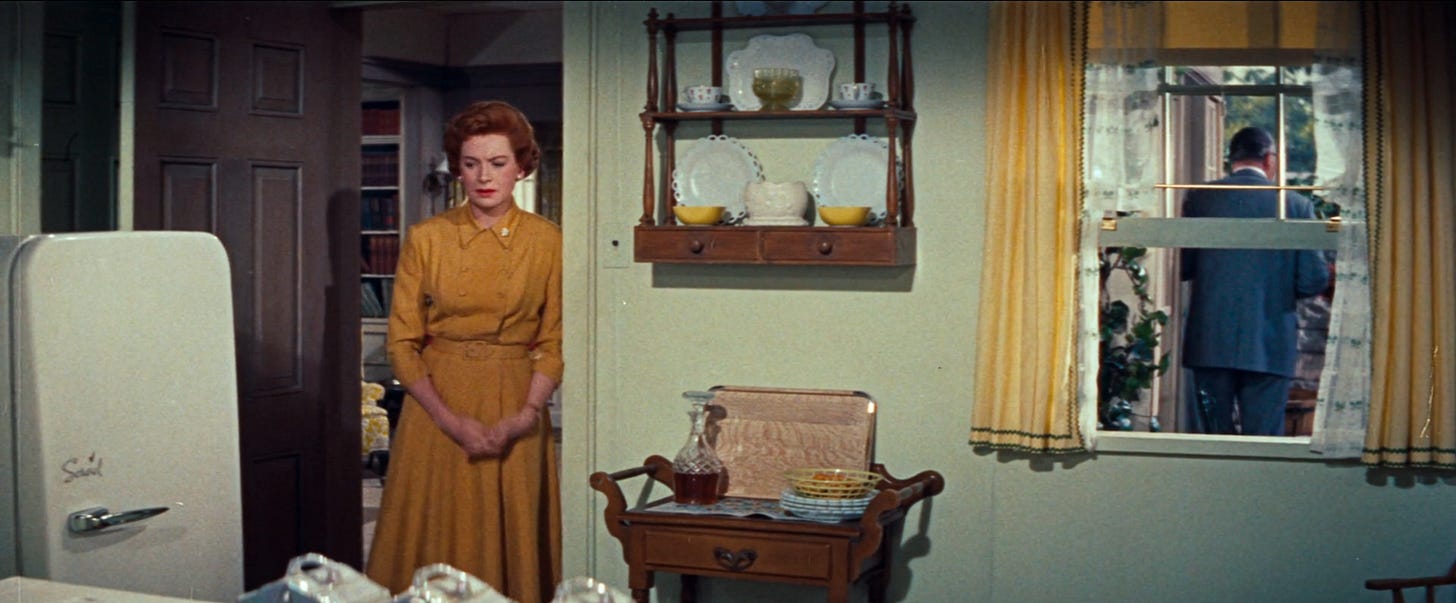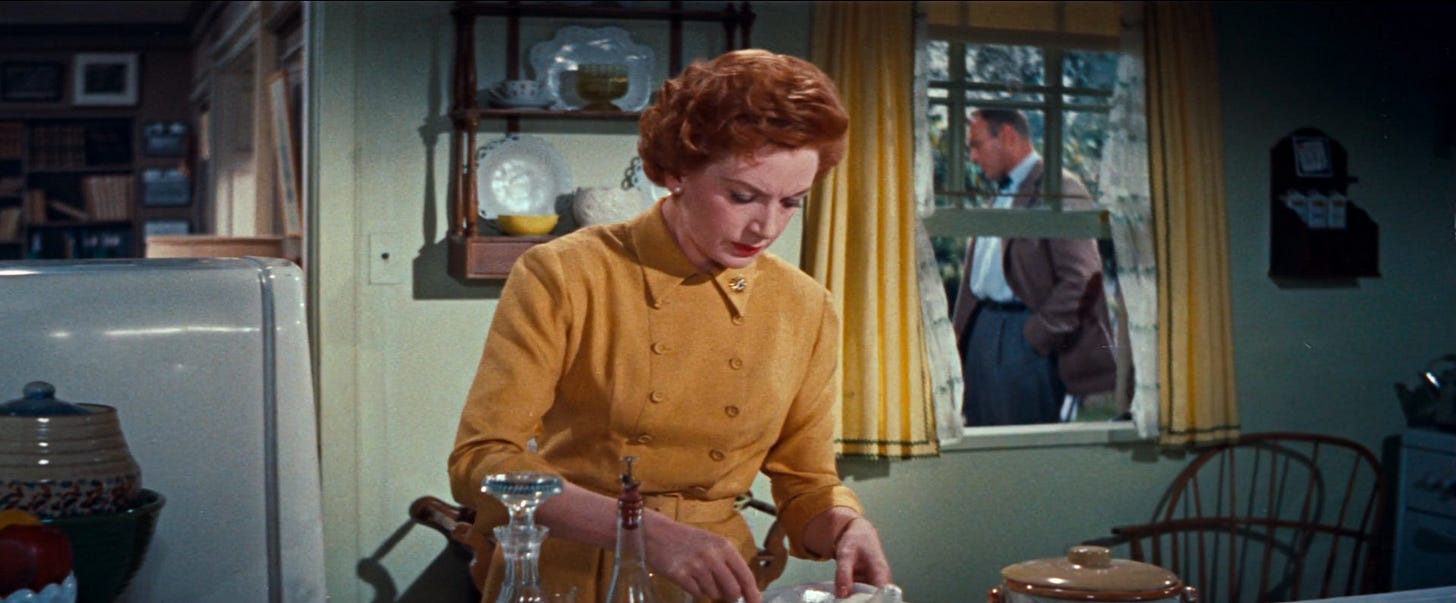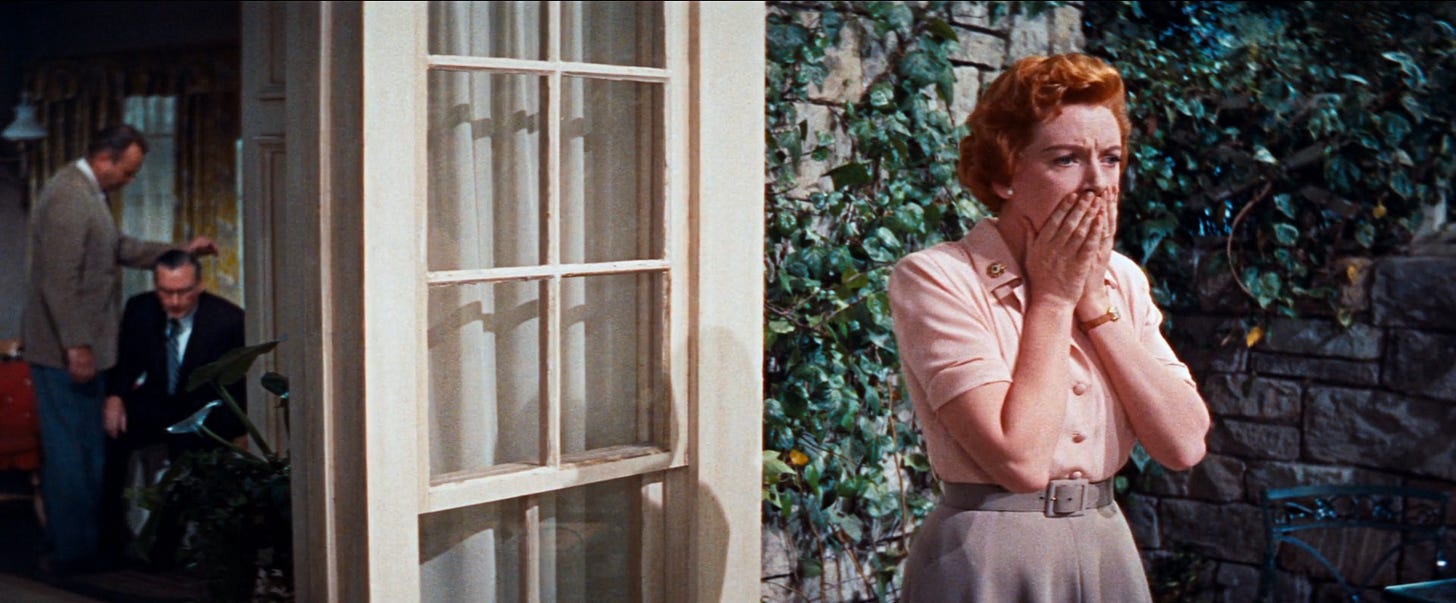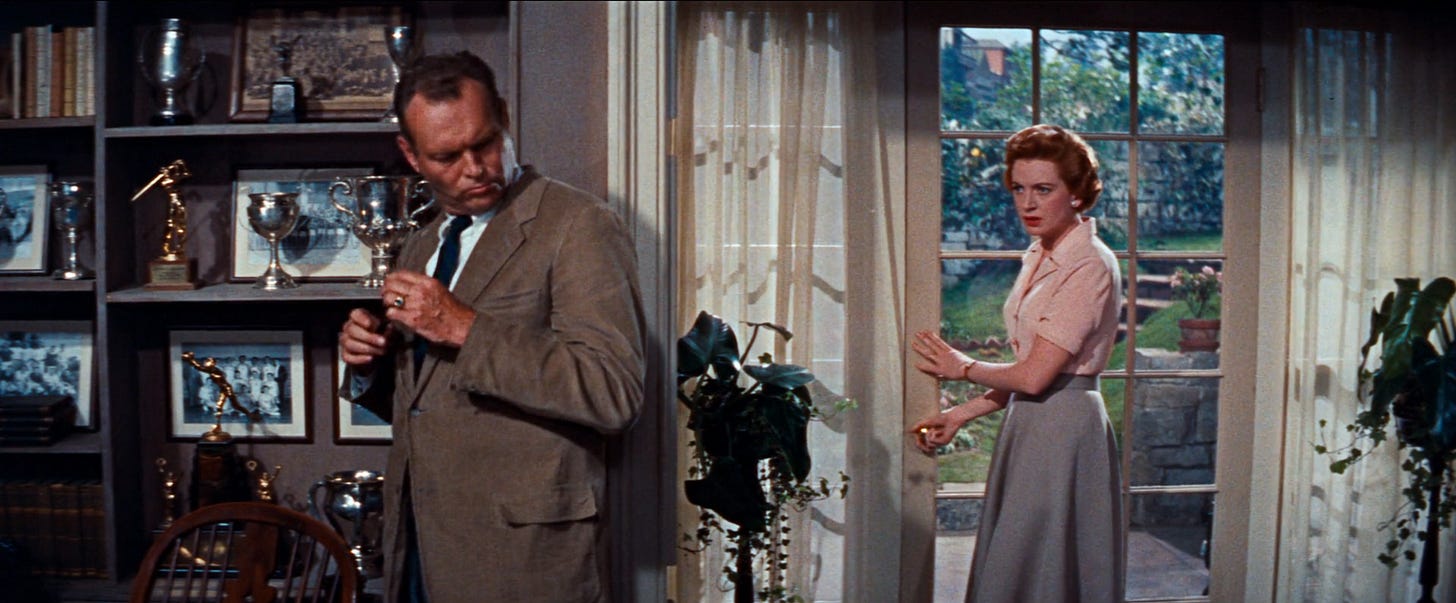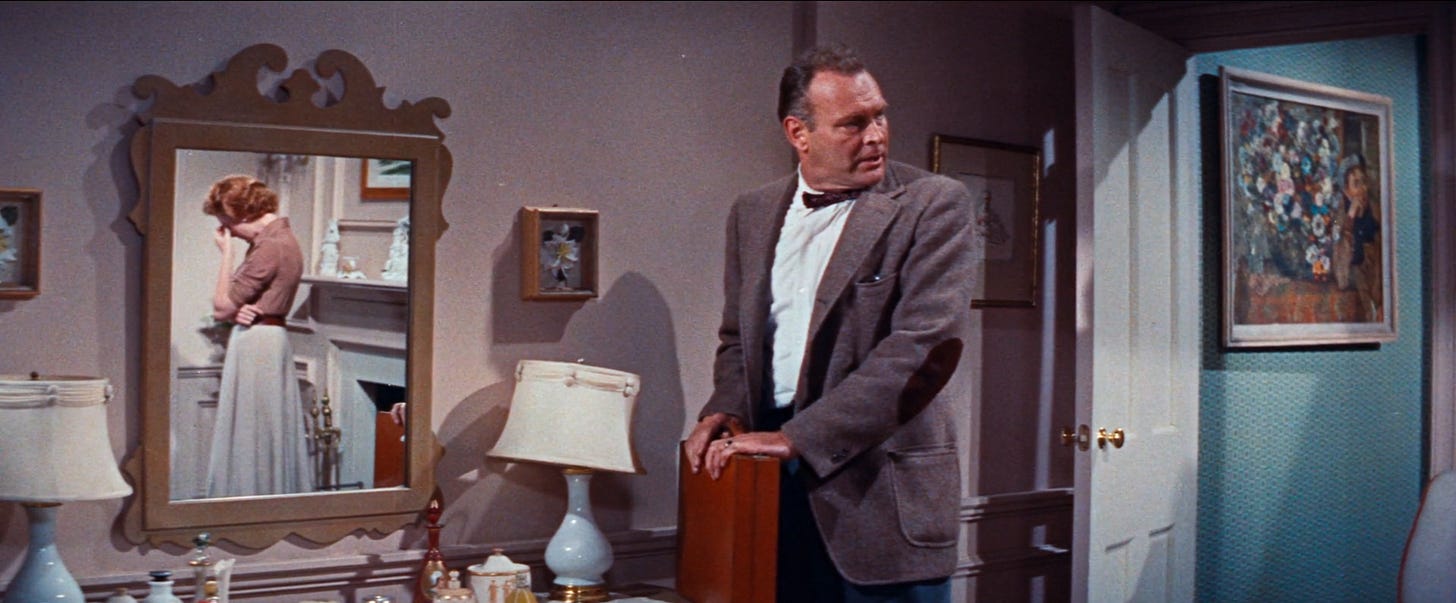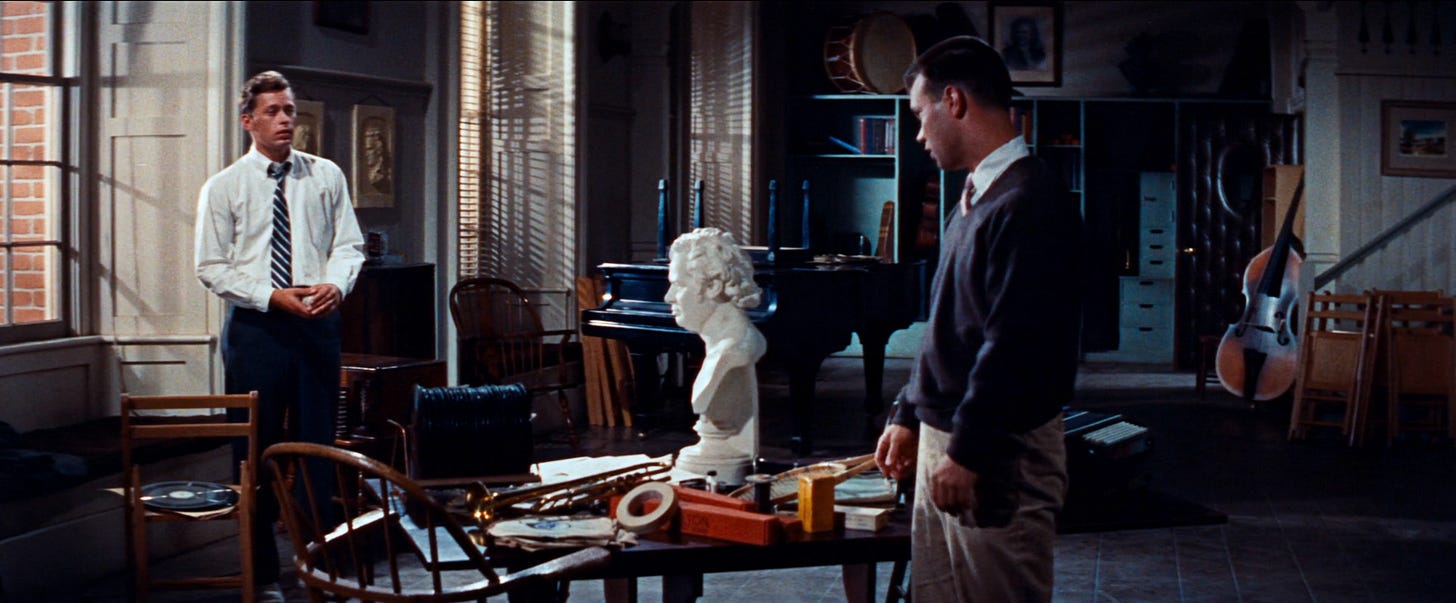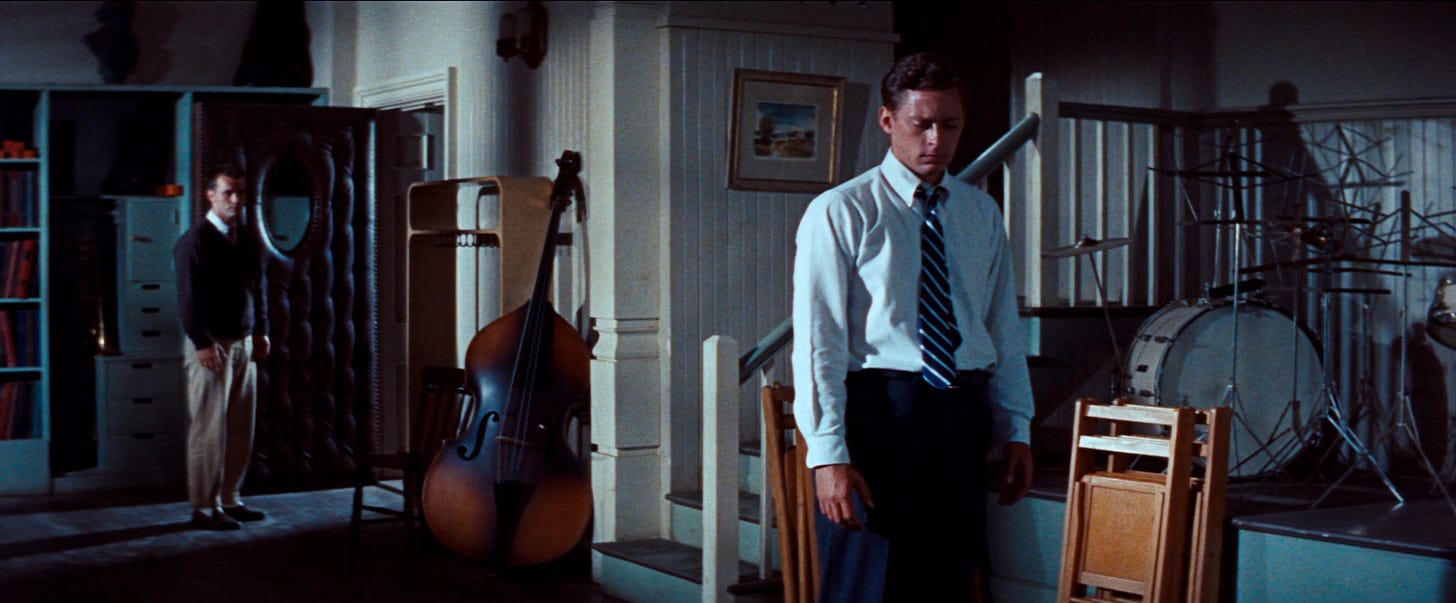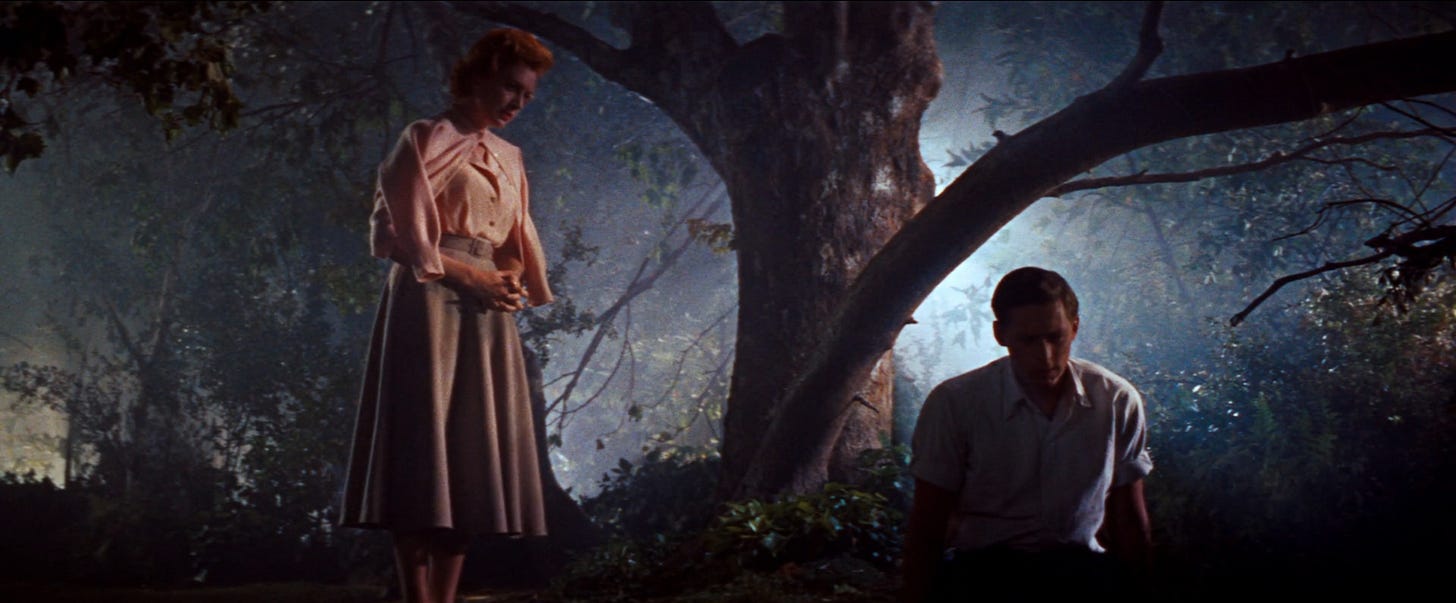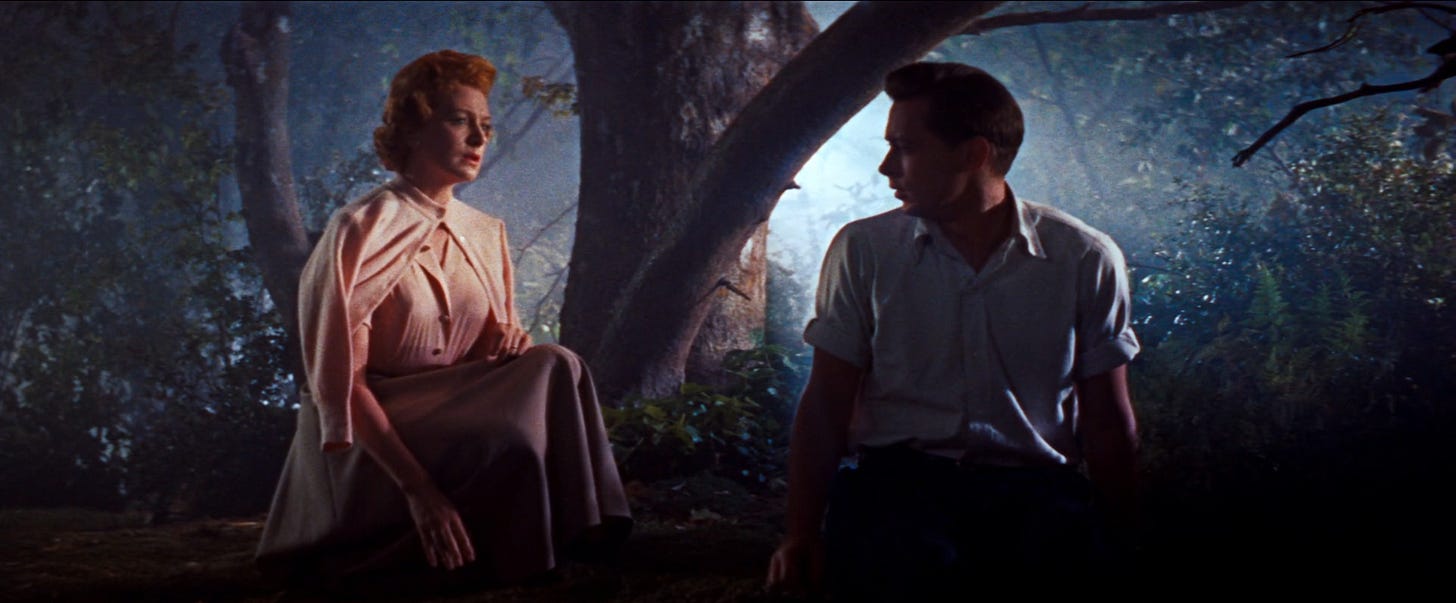We already looked at five of our favourite shots from 1956 melodrama Tea and Sympathy, but it’s worth specifically examining how the shots create frames within frames to convey how isolated its two main characters are and feel.
Listening In
We broke down techniques in an eavesdropping scene from Fresh Meat, and several of those principles apply here as well.
The frames within frames make clear Laura (Deborah Kerr) can hear and is paying attention to what the men are saying, even when she’s inside and they aren’t aware she’s listening in.
The window and door create a sort of ‘split screen’ where two things are happening, and we can watch Deborah reacting to the words in the further / smaller frame.
Same Space, Seperate Place (INTERIOR)
The way the above scene places Laura inside and her husband Bill (Leif Erickson) outside is one way to show how far apart they are.
But even with they’re in the same room, they’re not on the same page.
This is often depicted by putting them in distinct frames within the larger frame — sometimes through mirrors, sometimes by framing one in front of dark shelving and the other against a window to her garden.
The film is constantly showing how far apart they are.
Similarly, when Tom and Al (Darryl Hickman) have an emotional conversation about Al’s ‘limits’ of friendship and defending Tom, the scene uses three techniques to show the growing gulf between them:
it’s shot mostly in wides, without closeups; keeping the boys apart
one boy is often lit more brightly and/or standing against lighter background, while the other’s face is more shadowed and/or against darker background
as they move around the room, things are often between them; the table and bust (photo 1), or the cello (photo 2)
Same Space, Seperate Place (EXTERIOR)
This is Laura and Tom’s final conversation, and though they are in the same physical space, the way the tree creates their own ‘frames’ visually demonstrates they have decided to go their seperate ways.
Takeaways
A huge number of ways exist to create frames-within-frames, and a melodrama is a perfect place to utilise many of them; to chose what may work best, consider the social position, current relationship, and/or emotional undercurrent of the characters within the scene.

